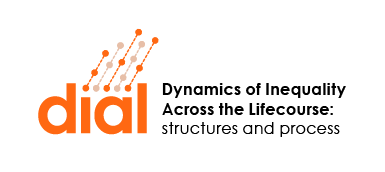International rankings of countries based on inequality of opportunity indices may not be robust vis-à-vis the specific metric adopted to measure opportunities. Indices often aggregate relevant information and neglect to control for normatively irrelevant distributional factors. This paper shows that gap curves can be estimated from cross-sectional data and adopted to test hypotheses about robust cross-country comparisons … Read more
Robust cross-country analysis of inequality of opportunity
Urban poverty: Measurement theory and evidence from American cities
We characterize axiomatically a new index of urban poverty that i) captures aspects of the incidence and distribution of poverty across neighborhoods of a city, ii) is related to the Gini index and iii) is consistent with empirical evidence that living in a high poverty neighborhood is detrimental for many dimensions of residents’ well-being. Widely … Read more
Just a phase? Mapping the transition of behavioural problems from childhood to adolescence
Purpose Young people change substantially between childhood and adolescence. Yet, the current description of behavioural problems does not incorporate any reference to the developmental context. In the current analysis, we aimed to identify common transitions of behavioural problems between childhood and adolescence. Method We followed 6744 individuals over 6 years as they transitioned from childhood (age … Read more
Is improving access to university enough? Socio-economic gaps in the earnings of English graduates
Much research and policy attention has been on socio-economic gaps in participation at university, but less attention has been paid to socio-economic gaps in graduates’ earnings. This paper addresses this shortfall using tax and student loan administrative data to investigate the variation in earnings of English graduates by socio-economic background. We find that graduates from … Read more
The role of local labour market conditions and pupil attainment on post-compulsory schooling decisions
Purpose – The purpose of this paper is to assess the role of local labour market conditions and pupil educational attainment as primary determinants of the post-compulsory schooling decision. Design/methodology/approach – Through the specification of a nested logit model, the restrictive independence of irrelevant alternatives (IIA) assumption inherent in the multinomial logit (MNL) model is … Read more
School choice in England: Evidence from national administrative data
We study school choice in England using a new dataset containing the choices of all parents seeking a school place in state secondary schools. We provide new empirical evidence to inform how the school choice market functions, including the number of choices made, whether the nearest school is the first choice and the probability of … Read more
Income Inequality and Mortality: A Norwegian Perspective
This paper uses Norwegian register data to examine the story behind income growth and people living longer in Norway over the last 70 years at both a municipal and individual level. It finds that the large gap in infant deaths between poorer and richer parts of the country largely closed in the late 1960s. However … Read more
Wages, experience, and training of women over the life cycle
This paper finds that on-the-job training can help mitigate some of the negative career effects of having children, especially for women who left education at the end of high school. The researchers used data from 18 waves of the British Household Panel Survey between 1991 and 2008, which contains information on the employment, education, training … Read more
Competitive schools and the gender gap in the choice of field of study
In most developed countries, students have to choose a major field of study during high school. This is an important decision because it largely determines subsequent educational and occupational choices. Using French data, this paper reveals that enrollment at a more selective high school, with higher-achieving peers, has no impact on boys, but a strong … Read more
Grandparents, moms, or dads? Why children of teen mothers do worse in life
We explore whether and why children born to teen mothers have worse outcomes later in life. Using Norwegian register data, we compare outcomes of children of sisters who have first births at different ages. We find that the causal effect of being a child of a teen mother is much smaller than that implied by … Read more
